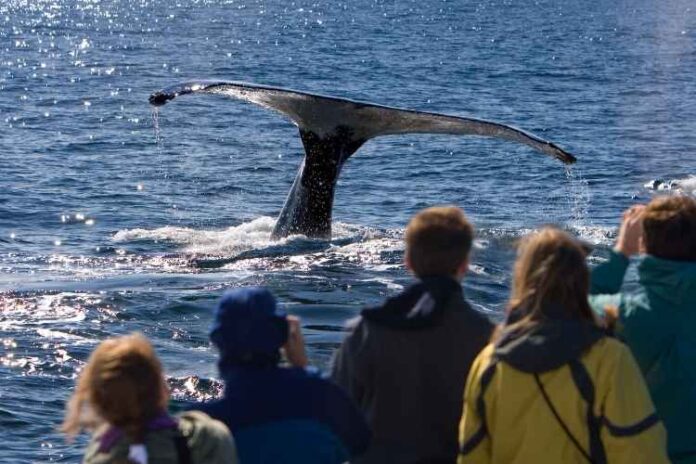On the west coast, you have the immense privilege of living in proximity to whales. As some of the largest mammals on this earth, they are truly a sight to see. How should you go about whale watching San Diego? This guide will help you to get started.
What Types of Whales You Will See
Ten different species of whales and dolphins populate the coastline of southern California throughout the year. It may be easiest to categorize whales by size, especially while watching from a distance. There is a lot of variety.
The first whale on the list is the blue whale, the largest mammal on earth. They can reach a length of 30 meters (98 feet) and a weight of 173 tons. Trailing close behind is the fin whale at 28 meters. However, fin whales tend to be much slimmer.
One tier down, humpback whales and gray whales come next, ranging from 14-16 meters. Bringing up the rear is the Minke whale, coming in at about 7 meters in length. These species tend to put on a show by leaping out of the water, called breaching.
From December to April you can see bottlenose dolphins, Pacific white-sided dolphins, common dolphins and Risso’s dolphins. You can also see orcas, a fan favorite. They are alternatively known as killer whales. Despite this nickname, these black and white beauties are dolphins, not whales.
When to Go Whale Watching
There are excellent opportunities for whale watching in San Diego year-round. Depending on the season, different species will be hanging around. Blue whale migration takes place during the summer months, so you are most likely to see these behemoths from May to August. Humpback and fin whales are in the area from July through November.
Winter is the time to look for gray whales, whose migration from Alaska begins in December and ends in early April. The fall and winter months are also when you can spot various species of dolphins and orcas. Whale watching could be a wonderful holiday treat for the family!
Whale Watching Tips and Tricks
One of the best ways to see a whale is from a boat. You will be much closer and more mobile, giving you a better chance of spotting one. You can join a group tour or charter a private sailboat, check next level sailing reviews to decide which is best for you.
If you aren’t able to book a boat, there are still plenty of opportunities to see a whale from shore. Grab a pair of binoculars if you have them, and scan the horizon from left to right. Look for blow holes, tails and water sprays. If you see stopped boats, they may be looking at a whale, so focus on that area.
There are many different ways to spot a whale, so don’t limit yourself to only trying once. Whether you spot a whale from the beach, a boat or a clifftop you are sure to have a blast. Gather your loved ones and have a once-in-a-lifetime experience whale watching.








